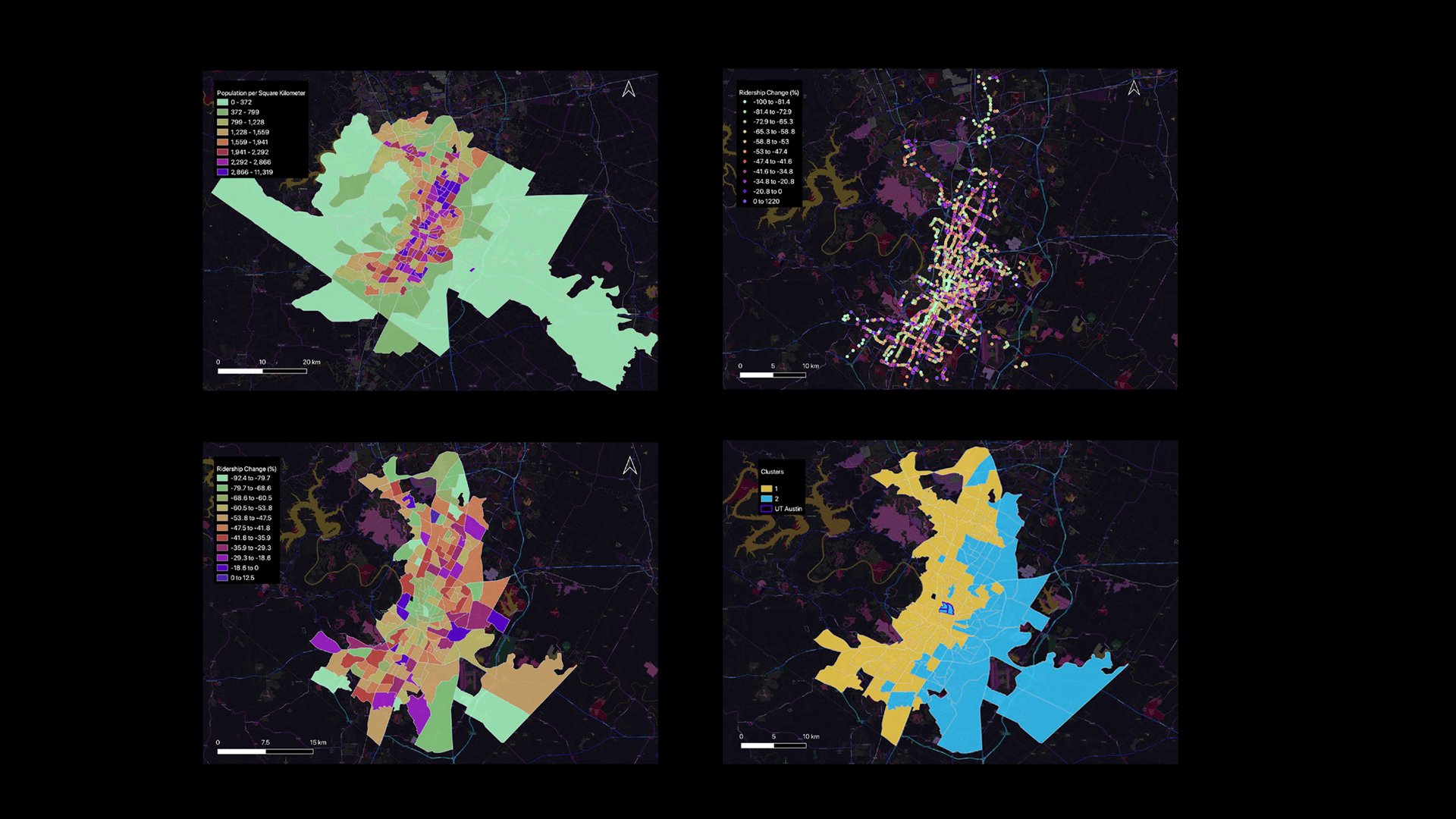This study examines how the COVID-19 pandemic affected public transit ridership in Austin, TX, utilizing data from the Capital Metropolitan Transportation Authority and the American Community Survey. Through multivariate clustering and geographically weighted regression, it identifies demographic and spatial factors influencing ridership declines. Results indicate that areas with older populations and higher percentages of Black and Hispanic residents experienced milder declines, while those with higher unemployment saw steeper drops. The percentage of Hispanic residents particularly influenced ridership in central Austin. These findings underscore the pandemic’s amplification of existing transit disparities within cities.





